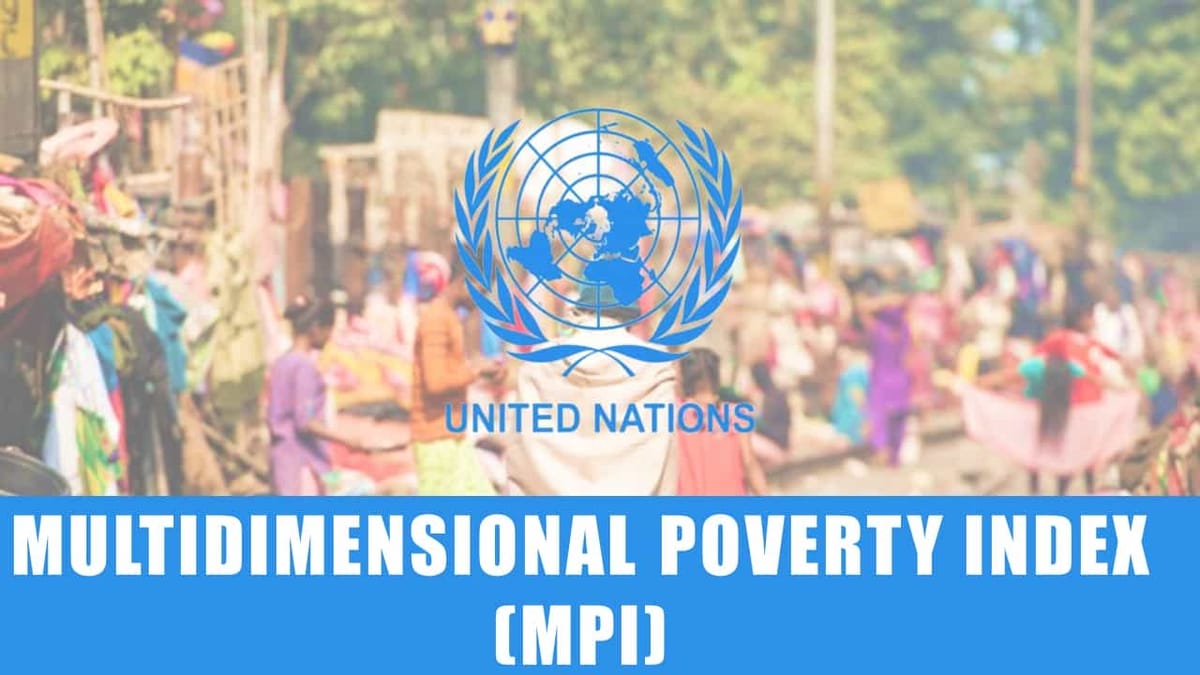Multidimensional Poverty Index (MPI) – 41.5 crore people exited poverty in India
According to the United Nations Development Program (UNDP) and The Oxford Poverty and Human Development Initiative (OPHI) report India’s poverty incidence decreased from 55.1% in 2005/06 to 16.4% in 2019/21, with notable decreases in deprivation in all 10 MPI indicators, leading to a more than halving of the MPI value and incidence of poverty.
Improvements in the MPI for India have significantly contributed to the decline in poverty in South Asia, and it is no longer the region with the poorest people, at 38. crores, compared to 57. crores in Sub-Saharan Africa.
Globally, 19.1% or 120 crores of the total 610 crore people in 111 developing countries live in multidimensional poverty. Almost half of them are live in Severe Poverty.
Important Facts:
- In 2015/2016, Bihar was the poorest state, with the fastest decrease in MPI value. Poverty rates decreased from 77.4% in 2005/2006 to 52.4% in 2015/2016 and 34.7% in 2019/2021. However, in relative terms, the poorest countries have lagged behind. Only one of the top ten poorest states in 2015/2016 was not among the top ten in 2019/2021. (West Bengal). The other states are Bihar, Jharkhand, Meghalaya, Madhya Pradesh, Uttar Pradesh, Assam, Odisha, Chhattisgarh, and Rajasthan..
- Despite progress, the report notes that ending poverty remains a daunting task. With 22.8 billion people, India has by far the poorest people in the world, followed by Nigeria with 9.6 billion. Two-thirds of these people live in a household with at least one malnourished person. Furthermore, India had 9.7 crore poor children in 2019/2021, which was more than any other country covered by the global MPI’s total number of poor people, children, and adults combined.
- According to the report, “the relative reduction from 2015/2016 to 2019/2021 was faster: 11.9% per year compared to 8.1% from 2005/2006 to 2015/2016.” This is not surprising given that relative poverty reduction is easier to achieve when starting levels are lower.
- “The Sustainable Development Goal target 1.2 is for countries to reduce by half the proportion of men, women, and children of all ages living in poverty in all its dimensions by 2030.” “India’s progress demonstrates that this goal is achievable, even at scale,” says Shoko Noda, Resident Representative, UNDP India.
- “While poverty has not increased, levels of undernutrition remain extremely high.” There is no discernible acceleration in the rate of improvement between NFHS-3 and NFHS-4 or NFHS-4 and NFHS-5. “And the MPI primarily captures the pre-COVID situation because 71% of the NFHS-5 interviews were pre-COVID,” says Reetika Khera, Professor at IIT Delhi.
StudyCafe Membership
Join StudyCafe Membership. For More details about Membership Click Join Membership Button
Join MembershipIn case of any Doubt regarding Membership you can mail us at contact@studycafe.in
Join Studycafe's WhatsApp Group or Telegram Channel for Latest Updates on Government Job, Sarkari Naukri, Private Jobs, Income Tax, GST, Companies Act, Judgements and CA, CS, ICWA, and MUCH MORE!"
